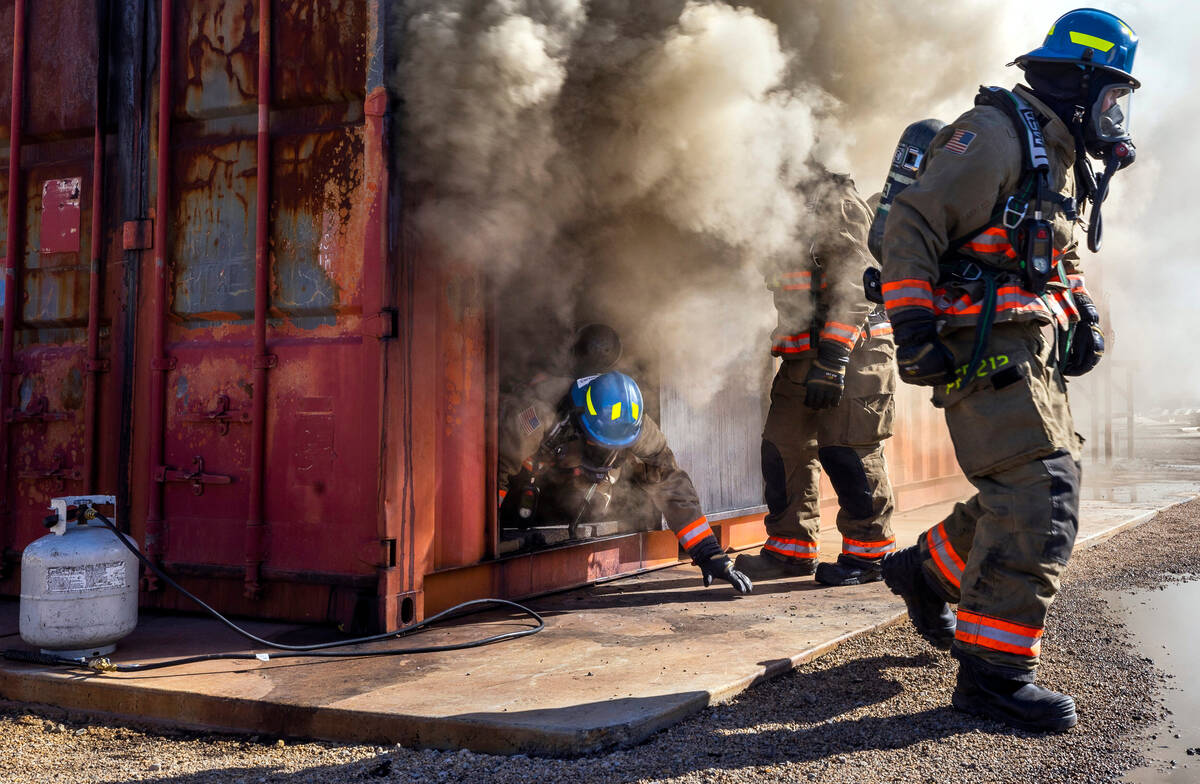How to protect your pets in the event of a fire
With several fires burning through apartment buildings and other structures throughout the Las Vegas Valley in July, here are some tips to keep your beloved pets safe.
Jace Radke, public information officer for the city of Las Vegas, said that installing smoke alarms, having an evacuation plan and knowing where your pets are in the house can make all the difference.
1. Smoke alarms
“The number one tip is to have smoke alarms,” Radke said. “Smoke alarms increase survivability for humans and pets in the house by 50 percent.”
The Las Vegas Fire Department offers free smoke alarms and installation assistance. Residents can schedule an appointment by calling 702-229-0366.
Radke said that on average, these appointments take less than one hour.
Smoke alarms can make a critical difference as some of the most fatal fires happen overnight while people are sleeping, explained Jordan Moore, community engagement administrator for the Fire Department.
2. Evacuation plan
It’s also a good idea to have a home escape plan, Radke said. The department provides tips on how to do this.
A home escape or evacuation plan allows you to get out of your home quickly. When coming up with one, it’s a good idea to get everyone in your home together, the guide explains.
Moore said that it’s important to find two ways to get out of a room, in case one of the options isn’t possible in a fire.
She said people rarely practice fire drills at home, despite spending a lot of time there. “I would just remind people to practice their exit drills,” she said.
The American Red Cross recommends training your pets to come to you when you call, or practicing taking them with you while rehearsing your escape route.
But Moore explained that it’s important to get out as soon as possible, even if that means leaving your pets behind. “A lot of times people end up harming themselves because they’re inside too long when they could have gotten out,” she said.
While you shouldn’t return back inside a structure once outside, knowing where pets are in the house may help firefighters find them while evacuating.
“We never want you to go back in for your pets. We want you to call 911,” Moore said. “When we get there we will try to locate all animals that are on the premises.”
3. Know where your pets are in the house
Once outside, Moore recommended having a safe meeting place. And when firefighters arrive, you can tell them how many animals are in the house and where they might be.
“We will try to make sure that we get there and we are able to remove the pet,” Moore said. The department’s trucks are equipped with pet oxygen, she added.
Pet oxygen has around a 50 percent success rate, Moore said. “If a pet does have some smoke inhalation, usually we are able to revive them,” she added.
The American Red Cross advises that you keep pets near entrances when away from home. This may help firefighters find them more easily.
In the event that no one is home or on the scene to tell firefighters that there is an animal in the house, the Red Cross recommends that pet owners put up pet alert stickers on visible windows that show the number of animals inside.
“In fire response, really seconds and minutes matter,” Moore said. Visibility is important.
Contact Estelle Atkinson at eatkinson@reviewjournal.com. Follow @estelleatkinsonreports on Instagram and @estellelilym on X.






















